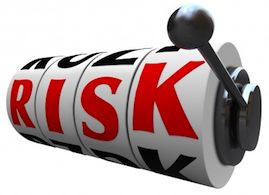 In August of 2007 we had one of the first truly large market dislocations that preceded the financial crisis. All at once, a large group of the biggest quantitatively managed hedge funds all started to get crushed at the same time. In just a couple of weeks, strategies that had worked brilliantly for years stopped working and no one really knew why. Many of the funds utilized similar strategies, but they were diversified, so it was odd that they were getting hit from all sides.
In August of 2007 we had one of the first truly large market dislocations that preceded the financial crisis. All at once, a large group of the biggest quantitatively managed hedge funds all started to get crushed at the same time. In just a couple of weeks, strategies that had worked brilliantly for years stopped working and no one really knew why. Many of the funds utilized similar strategies, but they were diversified, so it was odd that they were getting hit from all sides.
No one really knows who patient zero was, but the theory is that this was a large fund that was being hit with redemptions and margin calls from using too much leverage. The best account of this volatile period comes from The Quants by Scott Patterson. Here he discusses one of the largest hedge funds from Goldman Sachs and how they reacted to the increase in volatility:
At the headquarters of Goldman Sachs Asset Management in downtown New York, everyone was on red alert. One of the largest hedge fund managers in the world, with $30 billion in assets, GSAM was getting hit on all sides. It was seeing big losses in value, growth, small-cap stocks, mid-caps, currencies, commodities, everything. Global Alpha, the Global Equity Opportunity fund — every strategy was getting crushed. And like every other quant fund, its captains, Carhart and Iwanowski, had no idea why.
GSAM’s risk models, highly sophisticated measures of volatility, had been spiking for all of July. It was a strange sight, because volatility had been declining for years. And the way GSAM’s models worked, the decline in volatility meant that it had needed to take more risk, use more leverage, to make the same amount of money. Other quant funds had followed a similar course. Now volatility wasn’t behaving anymore. Volatility was actually…volatile.
The majority of these funds ended up capitulating after large losses ocurred because they started receiving their own margin calls and the risk models they used couldn’t explain what was going on. Only one or two of these funds were able to take advantage of beaten down markets but the majority compounded their problems by dialing down risk before the eventual snap-back rally.
This doubling down on leverage reminds me of an old friend of mine who thought he had a foolproof system that would never allow him to lose money at blackjack. Each time he lost he simply doubled his bet, with the hopes of always breaking even at the very least. This strategy sounded great in theory until his losses started to compound exponentially and he could no longer stomach going back to the ATM for more cash.
Doubling down your risk is something I think we’ll start to see from investors in the current low interest rate environment. In a post this week at The Research Puzzle, Tom Brakke highlighted a great quote by John Minahan from a recent CFA roundtable discussion that I couldn’t help but use myself:
Minahan: One of the things that I have learned is that when yields or expected returns are low, investors are inclined to take more risk because they either imagine they have or actually do have some return target they need to meet.
I often think that is imagined, and it leads to investors taking more risk when they do not get paid for it. I think that this “reaching for yield” phenomenon is something that should be avoided. If you are in a low-return environment, accept the low returns. Do not take risks unless you expect to get paid for those risks.
Trying harder in the markets doesn’t usually lead to better results. In fact, more often than not, it leads to worse performance. Markets don’t always cooperate when you try to hit a certain return target either. And reaching for yield because you feel safe by earning a certain level of income on your investments is a great way to take more risk where you probably aren’t looking to take any.
There are a few simple ways to control for a low yield, low returning environment:
- Diversify broadly across asset classes, investment styles, market caps and geographies.
- Take advantage of volatility by rebalancing periodically. If volatility does increase there could be more opportunities to take advantage through a simple rebalance.
- Keep your costs low as they will now eat up a larger percentage of your gains.
- Save more money.
- Follow a consistent process and don’t get caught chasing fad investments.
I’ve been talking about the prospect of lower future returns for a while now, but I think it’s an important point of emphasis because setting the correct expectations as an investor is so critical. I have no idea what’s going to happen in the future with regards to market performance, but if the forecasts of lower future returns comes to pass (and there’s a good chance that it will), discipline, patience and risk management will matter more than ever.
Read more from Ben on his blog A Wealth Of Common Sense. Follow Ben on Twitter: @awealthofcs
Any opinions expressed herein are solely those of the author, and do not in any way represent the views or opinions of any other person or entity.








